Home> Company News> How To Adjust Pump Pressure On An Excel White Hydraulic Pump ?
- AddressToh Guan Centre, 31/F,69 Toh Guan Rd E, Singapore 608609
- Factory AddressToh Guan Centre, 31/F,69 Toh Guan Rd E, Singapore 608609
- Worktime9:00-18:00
- Phone(Working Time)0065-31591578
- Phone(Nonworking Time)0065-31591578
- Fax0065-31591339
How To Adjust Pump Pressure On An Excel White Hydraulic Pump ?
2023-04-25 09:19:00Hydraulic pump pressure adjustment is a critical aspect of maintaining optimal performance and longevity of hydraulic systems. It involves adjusting the pressure of the hydraulic pump to meet the specific requirements of the system. Maintaining proper hydraulic pump pressure is essential for ensuring optimal performance, preventing premature wear and tear, and avoiding potential system failure.
In this guide, we will be discussing hydraulic pump pressure adjustment for Excel White hydraulic pumps. Excel White is a leading manufacturer of hydraulic pumps known for their reliability, durability, and efficiency. Understanding hydraulic pressure and its effects, the factors affecting hydraulic pump pressure, and the types of hydraulic pumps and their pressure ranges is important for ensuring accurate and consistent hydraulic pump pressure adjustment.
In the following sections, we will provide an overview of hydraulic pressure and its effects, the factors affecting hydraulic pump pressure, and the types of hydraulic pumps and their pressure ranges. We will also discuss how to adjust Excel White hydraulic pump pressure, troubleshoot common hydraulic pump pressure issues, and maintain and upkeep your hydraulic system to ensure optimal performance. Finally, we will provide some tips and best practices for achieving accurate and consistent hydraulic pump pressure adjustment and conclude with final recommendations for adjusting Excel White hydraulic pump pressure and future maintenance and adjustment considerations.
Understanding Hydraulic Pump Pressure
Hydraulic pressure refers to the force exerted by a hydraulic fluid on the walls of a hydraulic system's components. This pressure is essential for transmitting power from the hydraulic pump to the hydraulic system's components, such as hydraulic cylinders, motors, and valves.
The effects of hydraulic pressure can be both positive and negative. Positive effects of hydraulic pressure include increased power output, improved efficiency, and reduced fuel consumption. Negative effects of hydraulic pressure include premature wear and tear on hydraulic system components, reduced efficiency, and potential system failure.
Several factors can affect hydraulic pump pressure, including:
-
System load: The amount of force required to move a load affects hydraulic pump pressure.
-
Temperature: Changes in temperature can affect the viscosity of the hydraulic fluid, which can affect hydraulic pump pressure.
-
Hydraulic fluid viscosity: The viscosity of the hydraulic fluid can affect hydraulic pump pressure.
-
Hydraulic fluid contamination: Contaminants in the hydraulic fluid can cause damage to hydraulic system components and affect hydraulic pump pressure.
-
Hydraulic pump wear and tear: Wear and tear on hydraulic pump components can affect hydraulic pump pressure.
There are several types of hydraulic pumps, each with their own pressure ranges and capabilities. These include:
-
Gear pumps: Gear pumps are the simplest type of hydraulic pump and are typically used in low-pressure applications.
-
Vane pumps: Vane pumps are more complex than gear pumps and are typically used in mid-range pressure applications.
-
Piston pumps: Piston pumps are the most complex type of hydraulic pump and are typically used in high-pressure applications.
Understanding hydraulic pressure and the factors that affect hydraulic pump pressure is important for achieving accurate and consistent hydraulic pump pressure adjustment. In the following sections, we will discuss how to adjust Excel White hydraulic pump pressure, troubleshoot common hydraulic pump pressure issues, and maintain and upkeep your hydraulic system to ensure optimal performance.
How to Adjust Excel White Hydraulic Pump Pressure
Adjusting hydraulic pump pressure is a critical aspect of maintaining optimal performance and longevity of your Excel White hydraulic pump. In this section, we'll discuss the tools and equipment required for adjusting hydraulic pump pressure, provide a step-by-step guide on how to adjust Excel White hydraulic pump pressure, and outline some precautions and safety measures to observe during the adjustment process.
Tools and equipment required for adjusting hydraulic pump pressure
To adjust Excel White hydraulic pump pressure, you will need the following tools and equipment:
-
Pressure gauge: A pressure gauge is used to measure hydraulic pump pressure accurately.
-
Wrenches: Wrenches are used to loosen and tighten nuts and bolts.
-
Screwdriver: A screwdriver is used to adjust the pressure relief valve.
-
Safety glasses: Safety glasses are used to protect your eyes during the adjustment process.
-
Gloves: Gloves are used to protect your hands during the adjustment process.
Step-by-step guide on how to adjust Excel White hydraulic pump pressure
Follow these steps to adjust Excel White hydraulic pump pressure:
-
Locate the pressure relief valve: The pressure relief valve is typically located on the side of the hydraulic pump.
-
Install the pressure gauge: Install the pressure gauge into the hydraulic system's test port.
-
Check the system load: Make sure the system load is within the recommended range.
-
Start the engine: Start the engine and let it warm up to operating temperature.
-
Monitor pressure reading: Monitor the pressure reading on the pressure gauge and record the reading.
-
Adjust the pressure relief valve: Use a screwdriver to adjust the pressure relief valve to the desired pressure setting. Refer to the manufacturer's instructions for recommended pressure settings.
-
Check pressure reading: Monitor the pressure reading on the pressure gauge and adjust the pressure relief valve as necessary until the desired pressure setting is achieved.
-
Secure the pressure relief valve: Use a wrench to tighten the nut on the pressure relief valve.
-
Shut off the engine: Shut off the engine and remove the pressure gauge.
-
Test the hydraulic system: Test the hydraulic system to ensure proper operation.
Precautions and safety measures to observe during the adjustment process
When adjusting Excel White hydraulic pump pressure, observe the following precautions and safety measures:
-
Wear safety glasses and gloves to protect your eyes and hands.
-
Never attempt to adjust the pressure relief valve while the engine is running.
-
Always check the system load before adjusting hydraulic pump pressure.
-
Monitor the pressure reading on the pressure gauge during the adjustment process.
Troubleshooting Hydraulic Pump Pressure Issues
Hydraulic pump pressure issues can cause a range of problems, including reduced efficiency, premature wear and tear on hydraulic system components, and potential system failure. In this section, we'll discuss some common hydraulic pump pressure issues, how to diagnose these issues, and tips for resolving them.
Common hydraulic pump pressure problems
-
Low hydraulic pump pressure: Low hydraulic pump pressure can be caused by a range of issues, including a faulty pressure relief valve, a damaged hydraulic pump, or a leak in the hydraulic system.
-
High hydraulic pump pressure: High hydraulic pump pressure can be caused by a range of issues, including a blocked or restricted hydraulic line, a faulty pressure relief valve, or a damaged hydraulic pump.
-
Inconsistent hydraulic pump pressure: Inconsistent hydraulic pump pressure can be caused by a range of issues, including air in the hydraulic system, a damaged hydraulic pump, or a faulty pressure relief valve.
How to diagnose hydraulic pump pressure issues
To diagnose hydraulic pump pressure issues, follow these steps:
-
Check the pressure gauge: Check the pressure gauge to determine if the hydraulic pump pressure is too low, too high, or inconsistent.
-
Check the hydraulic fluid level: Check the hydraulic fluid level to ensure that it is within the recommended range.
-
Inspect the hydraulic system for leaks: Inspect the hydraulic system for leaks, paying close attention to hydraulic lines and connections.
-
Check the pressure relief valve: Check the pressure relief valve to ensure that it is functioning properly.
-
Inspect the hydraulic pump: Inspect the hydraulic pump for signs of wear and tear, such as leaks, damage, or excessive noise.
Tips for resolving hydraulic pump pressure issues
To resolve hydraulic pump pressure issues, follow these tips:
-
Adjust the pressure relief valve: Adjusting the pressure relief valve can help resolve issues with low or high hydraulic pump pressure.
-
Replace damaged hydraulic components: If hydraulic system components are damaged, they should be replaced to prevent further issues.
-
Fix leaks in the hydraulic system: Leaks in the hydraulic system should be fixed to prevent damage to hydraulic system components and ensure optimal performance.
-
Bleed air from the hydraulic system: Bleeding air from the hydraulic system can help resolve issues with inconsistent hydraulic pump pressure.
-
Consult a hydraulic system expert: If you are unsure how to diagnose or resolve hydraulic pump pressure issues, consult a hydraulic system expert.
By diagnosing and resolving hydraulic pump pressure issues promptly, you can prevent further damage to your hydraulic system and ensure optimal performance. Regular maintenance and upkeep, including following the recommended maintenance schedule, using high-quality hydraulic fluid, keeping the hydraulic system clean, and regularly inspecting hydraulic pump components for wear and tear, can help prevent pressure issues and ensure optimal hydraulic pump pressure performance.
-
Follow the manufacturer's instructions for recommended pressure settings.
-
If you are unsure or uncomfortable performing hydraulic pump pressure adjustment, seek professional help.
By following these steps and observing proper safety measures, you can ensure accurate and consistent hydraulic pump pressure adjustment for your Excel White hydraulic pump.
Maintenance and Upkeep
Regular maintenance and upkeep of your Excel White hydraulic pump is critical for ensuring optimal performance and longevity. In this section, we'll discuss the importance of regular maintenance for hydraulic pump pressure, the recommended maintenance schedule for Excel White hydraulic pumps, and some tips for ensuring optimal hydraulic pump pressure performance.
Importance of regular maintenance for hydraulic pump pressure
Regular maintenance is important for ensuring optimal hydraulic pump pressure performance. Without regular maintenance, contaminants can build up in the hydraulic fluid, hydraulic system components can become damaged or worn, and hydraulic pump pressure can become inconsistent. Regular maintenance can help prevent these issues, ensuring that your hydraulic system operates at peak performance and prolonging the life of your hydraulic pump.
Recommended maintenance schedule for Excel White hydraulic pumps
The recommended maintenance schedule for Excel White hydraulic pumps typically includes the following:
-
Change hydraulic fluid: Change the hydraulic fluid every 1,000 hours of operation or annually, whichever comes first.
-
Replace hydraulic filters: Replace the hydraulic filters every 500 hours of operation or annually, whichever comes first.
-
Inspect hydraulic pump components: Inspect the hydraulic pump components, including the pressure relief valve, every 1,000 hours of operation or annually, whichever comes first.
-
Check hydraulic system for leaks: Check the hydraulic system for leaks every 500 hours of operation or annually, whichever comes first.
Tips for ensuring optimal hydraulic pump pressure performance
To ensure optimal hydraulic pump pressure performance, follow these tips:
-
Use high-quality hydraulic fluid: Using high-quality hydraulic fluid can help prevent contaminants from building up in the hydraulic system and ensure consistent hydraulic pump pressure.
-
Keep the hydraulic system clean: Keeping the hydraulic system clean can help prevent contaminants from entering the hydraulic system and ensure optimal performance.
-
Inspect hydraulic pump components regularly: Regularly inspecting hydraulic pump components, including the pressure relief valve, can help prevent damage and ensure consistent hydraulic pump pressure.
-
Follow the recommended maintenance schedule: Following the recommended maintenance schedule can help prevent issues with hydraulic pump pressure and prolong the life of your hydraulic pump.
By following these tips and observing proper maintenance and upkeep, you can ensure optimal hydraulic pump pressure performance and prolong the life of your Excel White hydraulic pump.
Frequently Asked Questions
In this section, we'll answer some common questions about hydraulic pump pressure adjustment and troubleshooting for Excel White hydraulic pumps.
Q: How often should I check hydraulic pump pressure?
A: It's recommended to check hydraulic pump pressure regularly, especially before and after any major hydraulic system operation. Checking hydraulic pump pressure can help detect potential issues before they become major problems and ensure optimal hydraulic system performance.
Q: Can I adjust hydraulic pump pressure myself?
A: Yes, you can adjust hydraulic pump pressure yourself, but it's important to observe proper precautions and safety measures during the adjustment process. Make sure to wear safety glasses and gloves, follow the manufacturer's instructions for recommended pressure settings, and never attempt to adjust the pressure relief valve while the engine is running.
Q: What should I do if I encounter issues with hydraulic pump pressure?
A: If you encounter issues with hydraulic pump pressure, you should first diagnose the issue by checking the pressure gauge, hydraulic fluid level, and hydraulic system for leaks. From there, you can adjust the pressure relief valve, replace damaged hydraulic system components, and fix any leaks in the hydraulic system.
Q: How can I prevent hydraulic pump pressure issues?
A: Regular maintenance and upkeep, including following the recommended maintenance schedule, using high-quality hydraulic fluid, keeping the hydraulic system clean, and regularly inspecting hydraulic pump components for wear and tear, can help prevent pressure issues and ensure optimal hydraulic pump pressure performance.
Q: What should I do if I'm unsure how to diagnose or resolve hydraulic pump pressure issues?
A: If you're unsure how to diagnose or resolve hydraulic pump pressure issues, it's best to consult a hydraulic system expert. They can help diagnose the issue and recommend the best course of action for resolving the issue and ensuring optimal hydraulic system performance.
By understanding these common questions and answers, you can better maintain and troubleshoot your Excel White hydraulic pump and ensure optimal hydraulic system performance.
Best Practices
In this section, we'll provide some tips and best practices for achieving accurate and consistent hydraulic pump pressure adjustment and ensuring optimal performance for your Excel White hydraulic pump.
-
Use high-quality hydraulic fluid: Using high-quality hydraulic fluid can help prevent contaminants from building up in the hydraulic system and ensure consistent hydraulic pump pressure.
-
Keep the hydraulic system clean: Keeping the hydraulic system clean can help prevent contaminants from entering the hydraulic system and ensure optimal performance.
-
Follow the recommended maintenance schedule: Following the recommended maintenance schedule can help prevent issues with hydraulic pump pressure and prolong the life of your hydraulic pump.
-
Use proper tools and equipment: Using proper tools and equipment, including a pressure gauge, wrenches, and a screwdriver, can help ensure accurate and consistent hydraulic pump pressure adjustment.
-
Observe proper precautions and safety measures: Observing proper precautions and safety measures, including wearing safety glasses and gloves and never adjusting the pressure relief valve while the engine is running, can help prevent accidents and injuries during the hydraulic pump pressure adjustment process.
-
Consult the manufacturer's instructions: Consult the manufacturer's instructions for recommended pressure settings and other important information about your Excel White hydraulic pump.
-
Monitor hydraulic pump pressure regularly: Regularly monitoring hydraulic pump pressure can help detect potential issues before they become major problems and ensure optimal hydraulic system performance.
By following these best practices and observing proper maintenance and upkeep, you can ensure accurate and consistent hydraulic pump pressure adjustment and optimal performance for your Excel White hydraulic pump.
Conclusion
In conclusion, hydraulic pump pressure adjustment and maintenance are critical for ensuring optimal performance and longevity for your Excel White hydraulic pump. Understanding the basics of hydraulic pressure, factors affecting hydraulic pump pressure, and how to adjust hydraulic pump pressure can help you diagnose and resolve issues and ensure consistent and accurate hydraulic pump pressure.
Regular maintenance and upkeep, including following the recommended maintenance schedule, using high-quality hydraulic fluid, keeping the hydraulic system clean, and regularly inspecting hydraulic pump components for wear and tear, can help prevent pressure issues and ensure optimal hydraulic pump pressure performance.
By following best practices for achieving accurate and consistent hydraulic pump pressure adjustment, observing proper precautions and safety measures, and consulting the manufacturer's instructions, you can ensure optimal performance and longevity for your Excel White hydraulic pump.
Remember, if you encounter issues with hydraulic pump pressure that you're unsure how to diagnose or resolve, it's best to consult a hydraulic system expert. With proper maintenance and upkeep, you can ensure optimal hydraulic pump pressure performance and prolong the life of your Excel White hydraulic pump.
Mud pump bearings Turntable bearings Agricultural bearings Angular Contact Bearings Duplex Angular Contact Bearings Industrial bearings Iron and steel industry bearings Power transmission bearing Hydrostatic centripetal bearing Ball Thrust Bearings Papermaking Machinery bearings Agricultural machinery bearing McGILL bearing Rexroth pump assay Komatsu motor parts BOSCH Fuel injector Hitachi excavator parts Axial Piston Pumps Sauer Danfoss pump Eaton pump parts Nachi pump assay Linde pump Mining Construction Ball Bearings Linear Bearings vane pumps gear pumps inc piston pumps Thin-Section Ball Bearings Adapter Sleeves pressure valves gear reducer relief valves Mcgill Bearing Die & Mold Plain-Bearing Bushings FAG Bearing Singapore SKF bearing Accessories SKF bearing Housing SKF bearing shaft seals SKF Bearing units Bearing Distributors Inventory Oilfield mud pump bearings Heavy-Duty Shaker Screen Spherical Double row double row tapered roller bearings (inch series) Multi-Row Roller Bearings NTN Four Row Cylindrical Roller Bearings NTN SL Type Cylindrical Roller Bearings NTN SL Type Cylindrical Roller Bearings for Sheaves NTN Single Row Tapered Roller Bearings NTN Double Row Tapered Roller Bearings NTN Four Row Tapered Roller Bearings NTN Spherical Roller Bearings NTN Thrust Bearings NTN Bearings for special applications NTN DOUBLE-ROW CYLINDRICAL ROLLER BEARINGS NSK FULL-COMPLEMENT CYLINDRICAL ROLLER BEARINGS NSK SINGLE-ROW TAPERED ROLLER BEARINGS NSK YUKEN Piston pump DOUBLE-ROW TAPERED ROLLER BEARINGS NSK SPHERICAL ROLLER BEARINGS NSK SINGLE-DIRECTION THRUST BALL BEARINGS NSK CYLINDRICAL ROLLER THRUST BEARINGS NSK TAPERED ROLLER THRUST BEARINGS NSK SPHERICAL THRUST ROLLER BEARINGS NSK ROLLING BEARINGS FOR STEEL MILLS NSK SEALED-CLEAN FOUR-ROW TAPERED ROLLER BEARINGS NSK FOUR-ROW CYLINDRICAL ROLLER BEARINGS NSK DOUBLE-ROW TAPERED ROLLER BEARINGS NSK Roll Bearings for Mills NSK Ball Bearings NSK TAPERED ROLLER THRUST BEARINGS For Adjusting Screws NSK Thin Section Bearings Kaydon Double row double row tapered roller bearings (inch series) Double direction thrust tapered roller bearings Full complement Tapered roller Thrust bearing Thrust cylindrical roller bearings Thrust spherical roller bearings Sealed Four Row Tapered Roller Bearings Four row tapered roller bearings Double outer double row tapered roller bearings TDO double-row tapered roller bearings Single row tapered roller bearings inch Double inner double row tapered roller bearings TDI Double inner double row tapered roller bearings inch Spherical roller bearing Four row cylindrical roller bearings Single row cylindrical roller bearings Full row of cylindrical roller bearings Double row cylindrical roller bearings Double row full complement cylindrical roller bearings Four point contact ball bearings Double row angular contact ball bearings Deep groove ball bearings ANGULAR CONTACT THRUST BALL BEARINGS TYPE TVL DTVL angular contact thrust ball bearing. TP thrust cylindrical roller bearing TPS thrust cylindrical roller bearing THRUST SPHERICAL ROLLER BEARINGS TYPES TSR-EJ AND TSR-EM TTHD THRUST TAPERED ROLLER BEARINGS TTHDFL thrust tapered roller bearing TTHDFLSA THRUST TAPERED ROLLER BEARINGS THRUST TAPERED ROLLER BEARINGS TYPES TTSP, TTSPS AND TTSPL THRUST TAPERED ROLLER BEARINGS – TYPES TTC, TTCS AND TTCL SCREWDOWN BEARINGS – TYPES TTHDSX/SV AND TTHDFLSX/SV THRUST TAPERED ROLLER BEARING TYPES TTDWK AND TTDFLK CROSSED ROLLER BEARINGS TXR Tapered Roller bearings double-row • Type TDO Tapered Roller bearings double-row TDI TDIT Tapered Roller Bearings double-row TNA Tapered Roller Bearings double-row TNASWE Tapered Roller Bearings double-row Spacer assemblies TTVS TTSP TTC TTCS TTCL tapered roller thrust BEARINGS Heavy-Duty Shaker Screen Spherical Roller Bearings Timken SPHERICAL ROLLER BEARINGS CYLINDRICAL ROLLER BEARINGS ONE-ROW METRIC ISO SERIES CYLINDRICAL ROLLER BEARINGS one-row STANDARD SERIES CYLINDRICAL ROLLER BEARINGS FULL-COMPLEMENT NCF CYLINDRICAL ROLLER BEARINGS TWO-Row Four-Row Cylindrical Roller Bearings CYLINDRICAL ROLLER BEARINGS HJ SERIES CYLINDRICAL ROLLER BEARINGS 5200 A5200 metric series HeavY-duty needle roller bearings four-row cylindrical roller Bearing assembly four-row cylindrical roller Bearing inner ring Outer assembly four-row tapered roller Bearings • tQow – 2tdiw Timken Sealed roll neck Bearings four-row tapErEd rollEr BEaringS tQitS TnasWH TWo-roW TaPered roller bearings TdiT TnaT two-row tapErEd rollEr BEaringS tdik THrusT TaPered roller bearings TTdFlk, TTdW and TTdk bearings screwdown systems thrust tapered rollEr Bearings Thrust spherical roller bearing Mud pump bearings TOKYO-KEIKI piston pump TOKYO-KEIKI vane pump DAIKIN piston pump DAIKIN vane pump DAIKIN Rotor pump VICKERS Piston pump Vickers vane pump VICKERS gear pump NACHI gear pump NACHI piston pump Rexroth A1VO Rexroth A10VSO Rexroth AA4VSO Rexroth A15VSO Rexroth AZPF parker PV piston pump parker PVP piston pump parker PAVC piston pump parker vane pump Multi-Row Roller Bearings NTN Four Row Cylindrical Roller Bearings NTN SL Type Cylindrical Roller Bearings NTN SL Type Cylindrical Roller Bearings for Sheaves NTN Single Row Tapered Roller Bearings NTN Double Row Tapered Roller Bearings NTN Four Row Tapered Roller Bearings NTN Spherical Roller Bearings NTN Thrust Bearings NTN Bearings for special applications NTN DOUBLE-ROW CYLINDRICAL ROLLER BEARINGS NSK FULL-COMPLEMENT CYLINDRICAL ROLLER BEARINGS NSK SINGLE-ROW TAPERED ROLLER BEARINGS NSK YUKEN Piston pump DOUBLE-ROW TAPERED ROLLER BEARINGS NSK SPHERICAL ROLLER BEARINGS NSK SINGLE-DIRECTION THRUST BALL BEARINGS NSK CYLINDRICAL ROLLER THRUST BEARINGS NSK TAPERED ROLLER THRUST BEARINGS NSK SPHERICAL THRUST ROLLER BEARINGS NSK ROLLING BEARINGS FOR STEEL MILLS NSK SEALED-CLEAN FOUR-ROW TAPERED ROLLER BEARINGS NSK FOUR-ROW CYLINDRICAL ROLLER BEARINGS NSK DOUBLE-ROW TAPERED ROLLER BEARINGS NSK Roll Bearings for Mills NSK CROSSED-ROLLER BEARINGS NSK Ball Bearings NSK TAPERED ROLLER THRUST BEARINGS For Adjusting Screws NSK Roller Bearings NSK Thin Section Bearings Kaydon Double row double row tapered roller bearings (inch series) Double direction thrust tapered roller bearings Full complement Tapered roller Thrust bearing Thrust cylindrical roller bearings Thrust spherical roller bearings Sealed Four Row Tapered Roller Bearings Four row tapered roller bearings Double outer double row tapered roller bearings TDO double-row tapered roller bearings Single row tapered roller bearings inch Double inner double row tapered roller bearings TDI Single row tapered roller bearings Double inner double row tapered roller bearings inch Split spherical roller bearings Spherical roller bearing Four row cylindrical roller bearings Single row cylindrical roller bearings Full row of cylindrical roller bearings Double row cylindrical roller bearings Double row full complement cylindrical roller bearings Four point contact ball bearings Double row angular contact ball bearings Deep groove ball bearings ANGULAR CONTACT THRUST BALL BEARINGS TYPE TVL DTVL angular contact thrust ball bearing. TP thrust cylindrical roller bearing TPS thrust cylindrical roller bearing THRUST SPHERICAL ROLLER BEARINGS TYPES TSR-EJ AND TSR-EM TTHD THRUST TAPERED ROLLER BEARINGS TTHDFL thrust tapered roller bearing TTHDFLSA THRUST TAPERED ROLLER BEARINGS THRUST TAPERED ROLLER BEARINGS TYPES TTSP, TTSPS AND TTSPL THRUST TAPERED ROLLER BEARINGS – TYPES TTC, TTCS AND TTCL SCREWDOWN BEARINGS – TYPES TTHDSX/SV AND TTHDFLSX/SV THRUST TAPERED ROLLER BEARING TYPES TTDWK AND TTDFLK CROSSED ROLLER BEARINGS TXR Tapered Roller bearings double-row • Type TDO Tapered Roller bearings double-row TDI TDIT Tapered Roller Bearings double-row Spacer assemblies TTVS TTSP TTC TTCS TTCL tapered roller thrust BEARINGS Heavy-Duty Shaker Screen Spherical Roller Bearings Timken SPHERICAL ROLLER BEARINGS CYLINDRICAL ROLLER BEARINGS ONE-ROW METRIC ISO SERIES CYLINDRICAL ROLLER BEARINGS one-row STANDARD SERIES CYLINDRICAL ROLLER BEARINGS FULL-COMPLEMENT NCF CYLINDRICAL ROLLER BEARINGS TWO-Row Four-Row Cylindrical Roller Bearings CYLINDRICAL ROLLER BEARINGS HJ SERIES CYLINDRICAL ROLLER BEARINGS 5200 A5200 metric series HeavY-duty needle roller bearings four-row cylindrical roller Bearing assembly four-row cylindrical roller Bearing inner ring Outer assembly Timken Sealed roll neck Bearings four-row tapErEd rollEr BEaringS tQitS TnasWH TWo-roW TaPered roller bearings TdiT TnaT two-row tapErEd rollEr BEaringS tdik THrusT TaPered roller bearings TTdFlk, TTdW and TTdk bearings screwdown systems thrust tapered rollEr Bearings Thrust spherical roller bearing Mud pump bearings TOKYO-KEIKI piston pump TOKYO-KEIKI vane pump YUKEN vane pump DAIKIN piston pump DAIKIN vane pump DAIKIN Rotor pump VICKERS Piston pump Vickers vane pump VICKERS gear pump NACHI gear pump NACHI piston pump Rexroth A1VO Rexroth A10VSO Rexroth AA4VSO Rexroth A15VSO Rexroth AZPF parker PV piston pump parker PVP piston pump parker PAVC piston pump Main pump

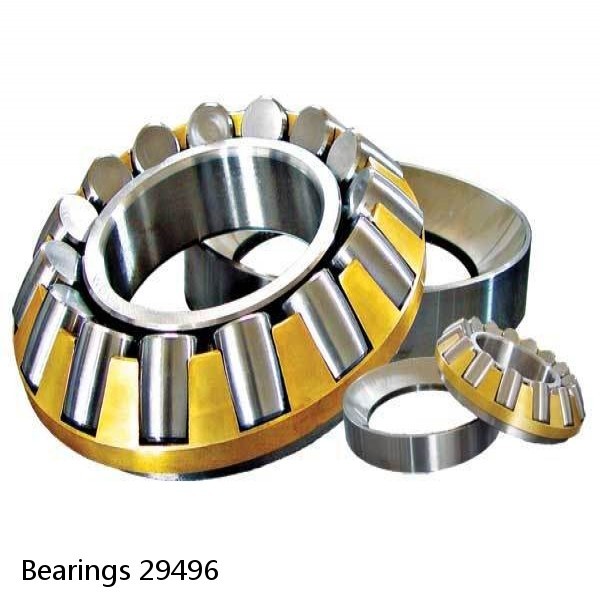 Bearings 29496
Bearings 29496 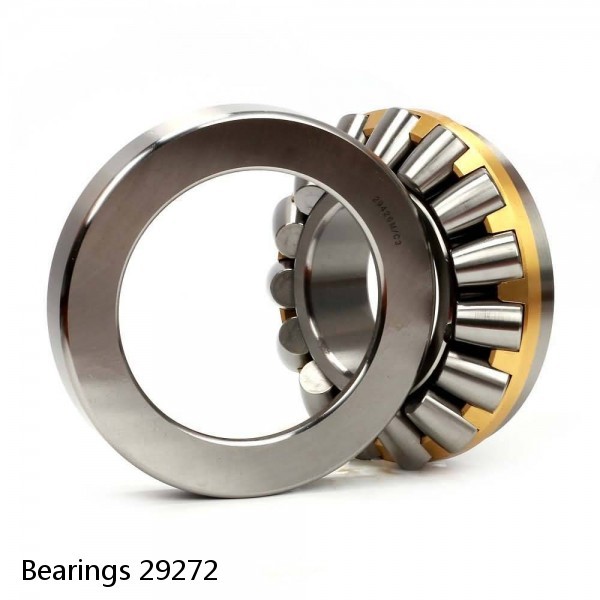 Bearings 29272
Bearings 29272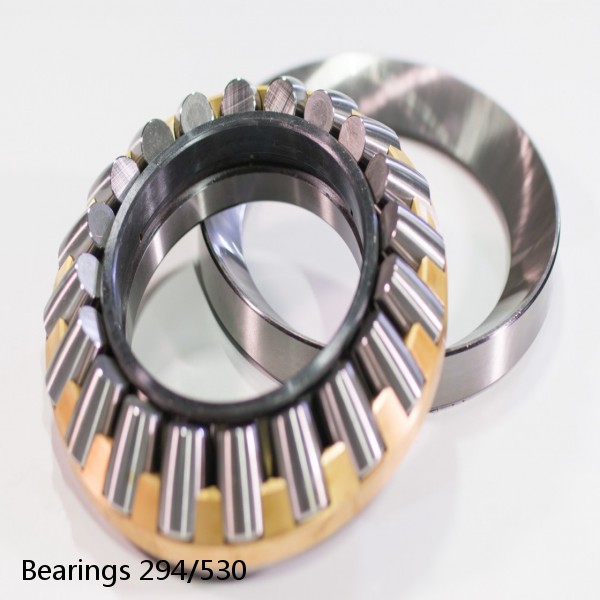 Bearings 294/530
Bearings 294/530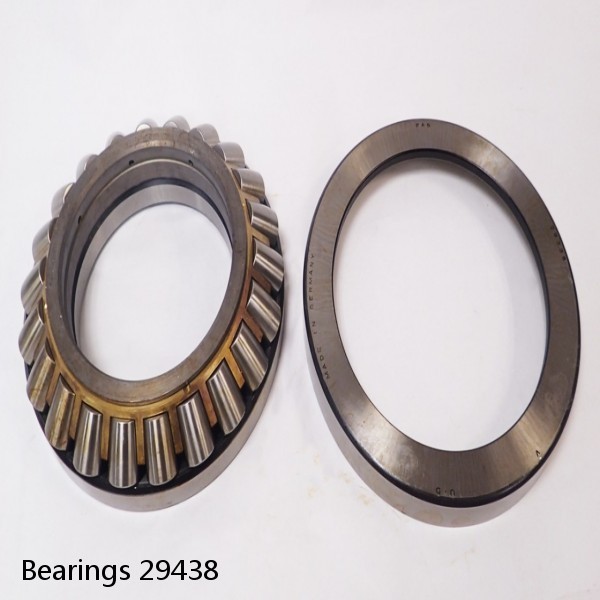 Bearings 29438
Bearings 29438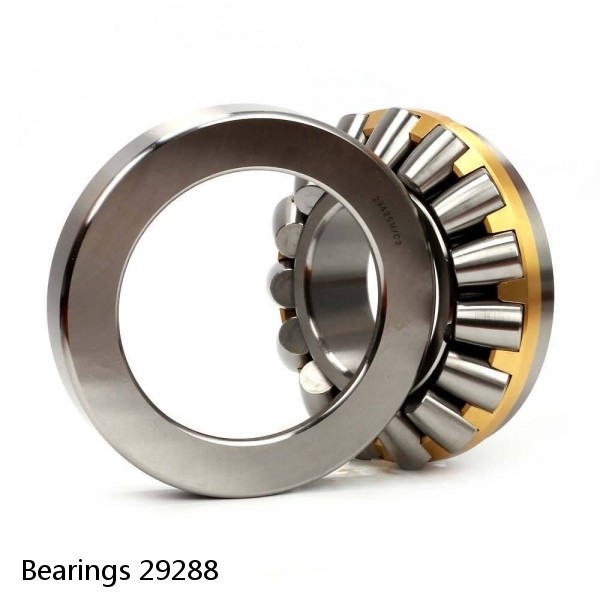 Bearings 29288
Bearings 29288